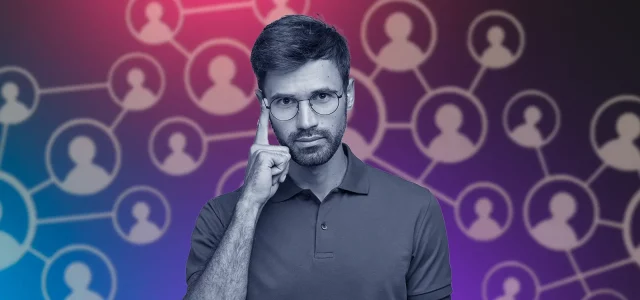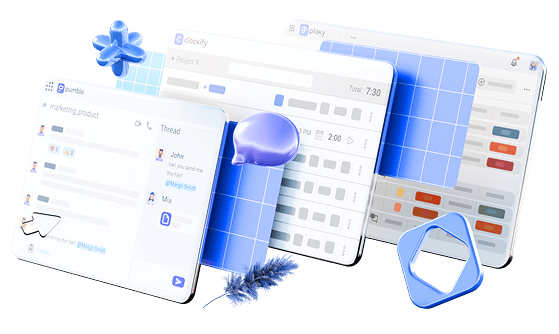The post-pandemic hardship and the global economic turmoil we now face have given us a new perspective on how and why we choose certain products and services. Evidently, we now put more emphasis on the whole experience we have with a company than ever before.
When a customer feels undervalued, they’re all but ready to jump ship and find another company to put their trust in. At CAKE.com, however, good customer experience — including the all-too-important customer support — is seen as not only a necessity but a key value driver too.
We talked to Jovana Kandic, CAKE.com’s VP of Customer Experience, to learn more about how CAKE.com retains customers and enhances their satisfaction. Here are her insights into the customer experience strategy, the challenges faced so far, and her predictions for the future of work from a customer service perspective.
You’ve been with CAKE.com for over 4 years now, from its earliest iterations of customer support. Can you tell us more about the evolution of the company’s Customer Support department?
It kind of started out small and grew organically. At first, I think everyone at the company answered customer emails, even the developers and our CEO, Nenad Milanovic. You can still find some of his replies to users in our ticketing system.
In the beginning, we only really had email support for Clockify, our first app. When I was hired, I was the only one to do support, and that included everything — from answering simple questions on how to do something to complex troubleshooting, bug tracking, etc.
Once our user base started growing rapidly, we hired more agents. Eventually, we also added live chat support and started covering multiple shifts throughout the day and on weekends because we wanted to offer full support at all times.
After that, we started offering phone support and added a forum too. So, once Pumble and Plaky were developed, we had full support for both of those products from the very start.
And what about the Success team? How did it start, and how does it tie into the bigger picture of Customer Experience?
As for our Success team, it was formed when we realized that our users could benefit from a more personalized onboarding experience and specialized training.
With Clockify, for instance, we noticed that people had a lot of questions about setting it up or how to do something in it. They kind of struggled at the beginning — which is normal, especially if you’ve never used a time tracker before.
So, our Success team guides users on how to get the most out of our apps once they start using them — and throughout their customer journey — all for the purpose of providing our users with the best possible customer experience.
Overall, I would say we are very customer-focused, so customer experience is of great importance to us. When done right, it can also be a great differentiator from your competitors. A solid customer experience goes a long way.
It’s also important for us to accommodate our customers’ needs — so we don’t discourage people from contacting us, hide behind a paywall, or otherwise make it a struggle to reach us. We’re available 24/7.
What about your evolution at the company? You first started as a customer support specialist, and now you’re the VP of Customer Experience. What aspects of your previous roles helped you mature into the VP role — and which parts come into play even today, when you’re not necessarily providing direct customer support via email, live chat, etc.?
I grew with the company. As the team expanded — and the types of help our Support and Success teams offer evolved — I took on other necessary responsibilities.
Getting to know the customers — talking to them, finding out what they need, how they use the app, etc. — is probably the most important part that is in play even today.
Communication in itself is important here — so I’m happy that others, like the CEO and developers, have been in touch with customers too. It’s so easy to “hide” behind the code and forget that you’re developing the tool for people that will use it and have opinions about it.
I’m actually grateful that I went through all of the phases — first as a support agent, then as a manager, etc. Throughout this journey, I learned a lot about what kind of experience customers are looking for. I know our customers, how they think, and what they feel — and even though it has evolved throughout the years, I can still feel the sentiment they have about our apps.
Today, this helps me direct our strategy of customer experience toward their specific needs to achieve the highest level of customer satisfaction.
Further reading:
Customers are an essential part of any business, so fostering a good relationship with them is crucial for the business’ success. Learn more about how to successfully communicate with customers and other third parties in the guide below:
How a customer feels about your product can have a huge impact on your business, and every company must focus on their ideal customer and what they need and want. So, what are the first boxes every product needs to tick, in terms of customers’ needs and wants?
For starters, you need to have a good product.
There’s no amount of customer support, marketing, or sales that could help you if your product is just not that good. But, when you do have a good product, everything else matters a lot more.
You also need to provide specific value — and that value has to be clear and easy to comprehend.
People don’t have the time or the energy to figure out why your tool is so great on their own. So, if it’s not clear what kind of value your tool provides, they won’t even notice the effort you put into it or the features you thought would help them.
If we’re talking about B2B SaaS, the importance of providing value is perhaps even more pronounced — because the tool is used for everyday work. Chances are the customer chose your tool because they believe it can solve a problem they have, help them grow, or just save them time or money. Therefore, you need to keep successfully solving your customers’ problems, helping their businesses grow, and ensuring they become more productive.
What do modern customers want today — and which of their needs do companies absolutely have to meet?
Something that might be more specific to modern customers is that they expect you to already know what they need without them explicitly telling you. And they want you to deliver personalized experiences.
That’s pretty obvious in customer support. It’s not uncommon for customers to send messages along the lines of “This isn’t working” — without any context at all — and expect you to know what’s not working, where, and why.
With modern technology, we’ve managed to anticipate some of the users’ behaviors and needs. So they have gotten accustomed to that — and they expect more of it.
Additionally, they expect fast solutions and hassle-free communication. You don’t necessarily have to delight them in any way, but you need to provide a quick answer to whatever their need is.
This is why I’m proud to say that we have over 95% CSAT (customer satisfaction), a 1h average response time, and a customer support team who is always there to help.
In your opinion, what makes customer experience good or bad today?
I think a lot of companies believe that they provide great customer experience and that they’re customer-focused — but in reality, that is not quite true.
Providing great customer experience is a company-wide commitment that starts with leadership and goes all the way through each level and department. So, it’s not enough to have your customer-facing teams focused on the customers — you need to have the whole organization on board.
My department is perhaps the mediator, as we are both the voice of the company when talking to customers and speak for the customers internally. But, we’re not the only department that needs to be involved.
In practice, this means that your product team should develop features that solve your customers’ problems, your marketing team should highlight how those features meet customer needs, your sales team should engage the right customers instead of selling to whoever will buy the product, etc.
CAKE.com has repeatedly gotten high scores for its customer service. How do you explain that? What are you doing better — or just different — than other companies?
The first thing is that our leadership truly appreciates customer support. They don’t see it only as something that’s necessary — they see it as something that drives value for the customer.
If done right, customer support can be a feature. It can be that small thing that makes people buy your product instead of someone else’s, especially if they have already had a poor experience with competitors.
If we’re talking about all the practical things we do, I’d say it’s our training that makes a huge difference. We pay a lot of attention to providing extensive agent training, and that definitely pays off in the long run.
It’s not that we only pick smart people for the job — everyone picks smart people for every position. We also try to find people who are a good culture fit, are motivated to do this job, and have the desire to be specialized in this kind of work — i.e., the desire to help people have the best possible customer experience.
We then train them to know our products well — all the ins and outs — so that they can help the customer in any kind of situation, even if they have never heard a particular question before.
There are no scripts, only guidance.
So, we let our agents see every problem as it is — perhaps unique, in some way — not as something they’ve heard a million times before.
What are some of the key aspects of providing top-notch customer experience at CAKE.com?
I’d say it boils down to the fact that we keep it simple. There are no bells and whistles or “delighting the customer”. Rather, we want people to know what they can expect from us — and we want them to know that we will deliver that kind of experience every time.
As a company, we are always looking for feedback by monitoring various communication channels where our customers can reach out to us — from email, live chat, and phone, to social media, product review boards, forums, etc. We then process that feedback to ensure our product and service decisions remain in line with the insights we got from our customers.
Both the Support and the Success team are always open to feedback, too. The Success team may be even more used to it because they are more proactive in their conversations with customers.
Whereas the Support team gets lots of emails and live chat messages, the Success team reaches out to consumers and tries to get their feedback and find out how they use our tools.
One of the comments we get the most on our customer satisfaction survey is that we provide fast support. And, people are really grateful for it! It takes us less than an hour to send the first reply when someone contacts us via email — with phone and chat, the replies are more instantaneous.
Additionally, customers have noticed the agents’ effort and that they nurture a more human approach.
Though our tools are business tools, communication with our customers is not strictly formal. We try to understand our customers, adapt, and mirror their language to find out what’s bothering them and solve it as fast as possible.
I always say that, when working with customers, no matter if you’re a part of the Support or Success team, 50% of your job is to solve their problems, and 50% is about how you make them feel while doing so.
I think all of this combined explains why we are so successful and why people score us highly.

How difficult is it to keep customers and ensure they remain loyal to the products?
It’s not easy in an ever-changing market, especially in times of economic turmoil or world crisis, which we have experienced recently.
People are becoming more cost-aware and trying to cut their expenses. Your tool might be the one that gets cut in the process if it doesn’t provide enough value — and that’s where customer experience comes in.
As software providers — and business leaders — we need to find ways to help people in times of crisis. We need to ask ourselves how we can support them, what they need, and what has changed for them.
We saw this clearly during the pandemic. Some things changed only slightly while other things were drastically different. People also developed different needs, so we had to adapt.
We are always trying to evolve in the direction that brings convenience and ease to our customers. So we use and create technology that enables this kind of development.
What are some of the main challenges of customer retention? Do you have any advice on dealing with those challenges?
One of the main challenges is probably the most obvious one — everyone starts thinking about retention when it’s too late in the game, i.e., when people start to complain. Businesses are so focused on acquiring new customers that they often neglect the part where they need to work to keep them.
A lot of strategies are based on trying to keep a customer who’s already one foot out of the door. That’s where the main error lies, I’d say.
You need to start working on customer retention from the moment the customer signs up. That’s when the real work starts, and it’s the reason we have a proactive Success team.
Once a customer signs up, you need to provide them with what they expect and keep that going for as long as possible. And, that’s difficult to do, because it doesn’t only boil down to a great Customer Support or Success team. A lot of things come into play here, such as providing the right product, listening to your customers, etc.
I’d say that, to overcome this challenge, you need to start thinking about retention strategies at the very beginning. It’s imperative to monitor Customer Health throughout every stage of their journey.
In practice, this means you should ensure customers have been onboarded successfully. Better yet, you should have metrics in place that show if the customers are engaging with the product in a meaningful way and achieving their goals with it, as well as if there’s any friction you should look into.
You mentioned the pandemic, how people’s needs changed, and how the company had to adapt to that. What were the main challenges during the pandemic?
One of the main challenges during the pandemic was that people were asking more questions.
Our products are some of the best tools for remote workers, so lots of people started using them back then — and naturally, they had questions.
So, we saw a spike in email communication with customers. That was a bit challenging to overcome — because we had a bigger workload, but had to provide the same level of support and experience for everyone.
What kinds of consequences could there be for companies that don’t care about customer experience?
Well, some research suggests that customers are more likely to badmouth a company for a bad experience than share their positive experiences.
Either way, people talk. But, it seems they’re far more sensitive to negative experiences than they are to positive ones. They see a positive experience as something normal — something expected — while a bad experience is something they would definitely speak about.
And then, the word gets out, and you’ve closed not just the door for that particular customer but for everyone else that person is in touch with. That’s a major issue.
And what about the customers? How does good or bad customer experience affect them — and especially their purchasing decisions?
I think it’s just the other side of the same coin. Poor customer experience can be one of the reasons customers decide to ditch your product. Moreover, they can then discourage other people from trying it out.
The reason people unsubscribe or stop using your tool is that they don’t see the value in it anymore — it’s no longer cost-effective for them. And, you cannot have a fixed set of values and keep it that way. As your customers’ needs change, you need to keep providing more, and continue building your product around those needs.
Now, I don’t think that customers decide to look for alternatives immediately after they’ve had a bad experience, an unresolved query, or similar. This is especially true in B2B. If it’s a business tool, it’s not that easy to switch — so the customer is unlikely to jump at the first opportunity to go somewhere else.
But, bad customer experience can happen even when you’re actively trying to prevent it. Sometimes, you may not even know that your customer experience has been rather poor.
For example, you think you resolved a question, but then you never hear back from the customer. Flash forward a month or two, and you see they canceled their subscription. In that case, perhaps your inability to resolve that question was partially responsible for the cancellation.
Still, poor customer experience is a strong indicator that your customers aren’t happy with your product. Plus, for some people, customer support is more of a feature and is more important, especially if they aren’t tech-savvy and need a lot of guidance. Those people are more sensitive to customer experience — in that they value it more, in comparison to those that prefer self-service, reading user help pages, and trying to resolve issues on their own.

High-level customer experience can be a real game-changer for a company, and it seems it has been the primary focus for CAKE.com from the start. So how has focusing on it changed CAKE.com in particular?
I was surprised by how committed the company was to focusing on customers from the very start — and the idea that customer support was important and should be developed internally.
It was something we focused on from the beginning, just on a different level.
When starting out with customer support for Clockify, we learned by trial and error. Throughout the years, we got to know our customers better to understand how to provide good customer service to them. Of course, we made some mistakes along the way and tried to correct them, so it wasn’t perfect. But it definitely helped our company grow.
And, that level of commitment could be seen in our other tools too. When we developed and launched Pumble and Plaky, people were a bit surprised in regard to the level of service they got from us. It’s not so common for new tools to have both live chat and phone support, a fast response time, support over weekends and holidays, etc.
Would the company’s growth have been slower if it weren’t so customer-centric?
I’m not sure what it would look like if we weren’t so focused on our customers. The growth itself would probably have been much slower. But, I cannot take all the credit for our success. Customer experience is important — but there are a lot of other things that go into it, such as the product itself.
I’d say that providing products that are useful to businesses is probably the biggest driver of our success, and one of the important aspects of that success is customer experience. But it’s not just about the product or customer support — it’s everything, from marketing and sales to design and content. Everything, together, is a powerful force that got us to where we are today.
You’ve also witnessed the company’s growth before, during, and after the pandemic. Did customer demands change a lot after the pandemic, and if so, how has that affected your customer experience strategy — and the way your team now handles customer requests, complaints, and similar?
During the pandemic, in terms of data, we noticed a spike in live chat support. People essentially wanted to talk to human beings.
At CAKE.com, we’ve always had this ‘be human’ approach, so we aren’t simply trying to solve questions or determine bugs — we are also building relationships with the customers. I don’t think generic responses ever worked for anyone, but the pandemic put more emphasis on that human approach since people were looking for a more personal touch.
There was a bit more small talk during the pandemic, too. Conversations with customers weren’t always strictly related to the problems.
People were also more relaxed overall, as far as communication goes. They tried to connect with our agents by asking them how they were doing in those trying times.
We also noticed an increase in live chat and phone support in comparison to email support. People simply didn’t want to wait and waste time, as time was — and still is — precious.
So, when everything went online during the pandemic, people expected fast solutions and didn’t have that much patience.
Is there a specific type of people you hire for customer support?
Everyone thinks that customer support is difficult to do because communicating with people can be emotionally draining. And yes, when you handle 100 tickets or 20 calls a day, it can be tricky to remember that you’re not communicating with yet another customer. For you, it might be just another ticket or phone call — but for them, it might be their first time trying to contact the company about a certain problem.
It’s important to remember that the customer is someone who’s trying to do something. They’re already frustrated that they have to call or write to customer support. During the pandemic, and even after it, it became more obvious that people also want you to make them feel good while resolving the problem. So, it’s not enough to just provide a solution — you have to be careful about how you approach the customers and handle their problems.
That’s why picking the right people for customer-facing teams is so important. You should choose people that have a pronounced sense of empathy, are ready to help customers and understand what’s behind their queries, and don’t take things personally. I’d say having such people on board is another reason we’re so successful.
Obviously, the strategy you have now seems to be working. Surely you plan on enhancing it as customer needs and wants change — but what are some of the main ways you see it changing in the future? Can you anticipate how customers will change in 5 or 10 years and what will matter the most to them then?
I’m always wary of anticipating or predicting the future, especially because so many things could change in the digital world in 5 or 10 years. Still, with artificial intelligence being the new hot topic, some predict we won’t have human customer support anymore.
I don’t believe that — I think human customer support will always be necessary because humans need other humans.
We got proof of that with chatbots.
When chatbots appeared, everyone thought they were going to change the game and that companies would cut their support costs because chatbots would replace humans. But, it didn’t work — people were still picking up the phone and calling customer support.
Some companies, especially larger ones, still use chatbots because they believe they can resolve simple questions faster. But, that depends on the customer — and if they can figure out the right way to communicate with the chatbot.
Perhaps AI will fix that — provide a better service, find out what the customer’s issue is, and give a more tailored response. But, more complex issues will likely have to be resolved by a human, at some point.
In general, since AI requires us to be more specific, I don’t think it will replace human customer support. It is, after all, a tool, and you still need people to monitor it. Plus, it may eliminate that personal touch we mentioned earlier, which could distance the customers from your product.
So you don’t think AI will replace customer support — but do you believe it will find its uses/could be helpful in the field in any way?
Yes, AI may help in some other ways. AI might be a good option for enhancing the knowledge base, for instance. It could make it easier to navigate for people who want to self-service and resolve issues on their own.
When it comes to customer support, we can already use AI to tag tickets or pull up information about customers faster. This gives the team more insight into all the customer communication and, ultimately, more data to work with.
So over time, AI might make customer service more efficient. However, that might increase customers’ expectations as well — so you might need another innovation to keep up with that.
I’m not sure what that innovation could be, but that’s how we move forward — through innovations. And, it’s something that could definitely happen in a few years, perhaps even sooner. But we’ll just have to wait it out and see what happens.
This is the latest installment in our CAKE.com interview series on our Empowered Team blog. You can also read an interview with our CEO, Nenad Milanovic, on the future of work from a leader’s perspective, and an interview with our VP of Human Capital, Biljana Rakic, on the challenges and benefits of the remote-first model.
How we reviewed this post: Our writers & editors monitor the posts and update them when new information becomes available, to keep them fresh and relevant.



